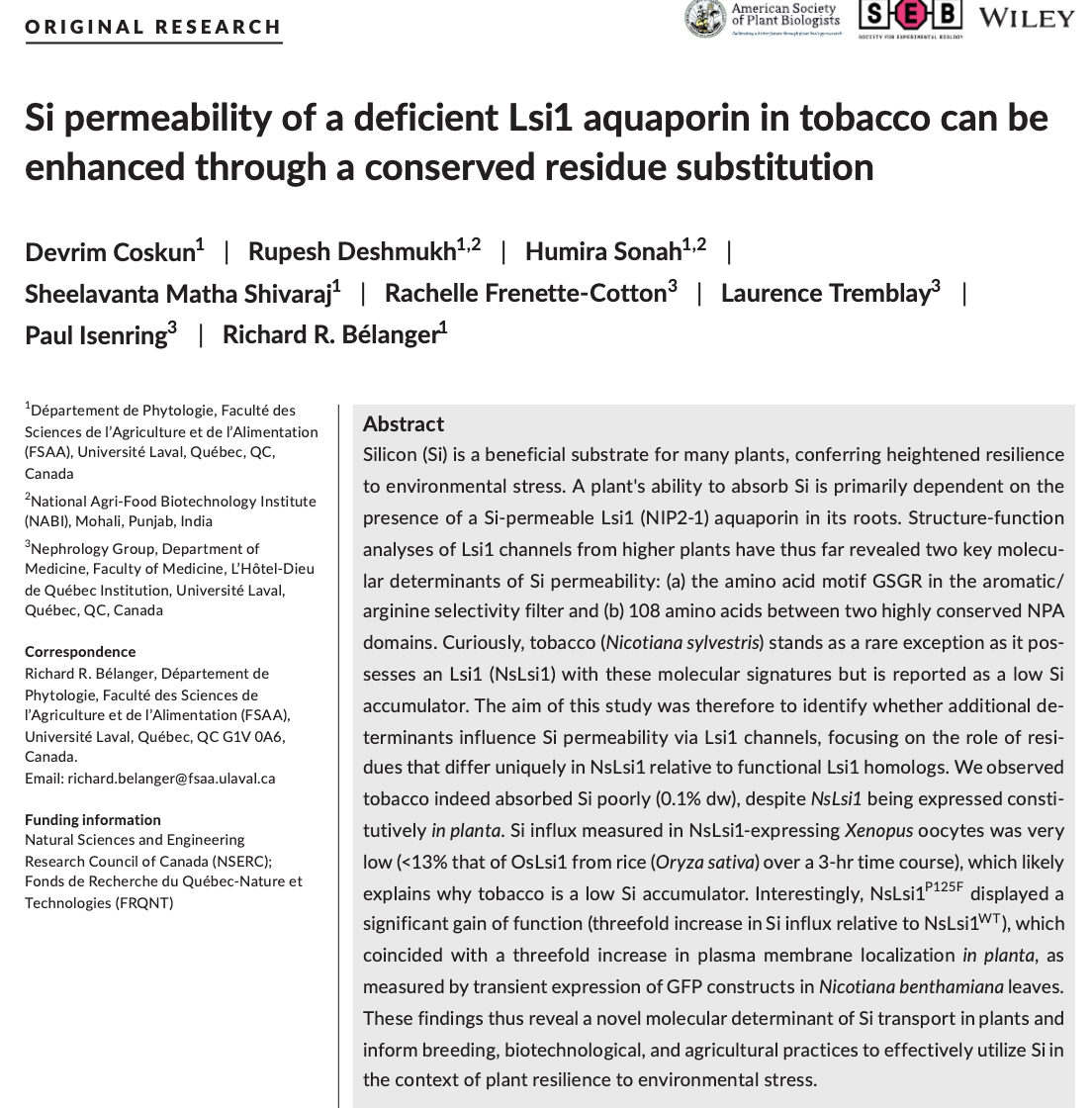
- February 18, 2021
Si permeability of a deficient Lsi1 aquaporin in tobacco can be enhanced through a conserved residue substitution
Devrim Coskun, Rupesh Deshmukh, Humira Sonah, Sheelavanta Matha Shivaraj, Rachelle Frenetter-Cotton, Laurence Tremblay, Paul Isenring, Richard R. Belanger|Department of , National Agri-Food Biotechnology Institute (NABI), Mohali, Punjab, India, Nephrology Group, Department of Medicine, Faculty of Medicine, L’Hotel-Dieu de Quebex Institution, university Laval, Quebec, QC, Canada|2019|Plant Direct|3:1-10 DOI: 10.1002/pld3.163
Silicon (Si) has been shown to be beneficial for plants for protection against a wide range of biotic and abiotic stresses in many species. However, not all plants are able to absorb or benefit from Si supplements. The plasma membrane channel Lsi1, in coordination with the Si-efflux transporter Lsi2, is responsible for the primary root uptake of Si from the external environment into the xylem. It is currently known that two molecular signatures dictate Si permeability in the Lsi1: a pore that consist of the amino acid motif GSGR located in the ar/R selectivity filter region and the 108 amino acids between two highly conserved NPA domains. Tobacco is known to not be capable for absorbing Si, despite containing NsLsi1 which has been found to possess the known molecular determinants of Si permeability. The aim of the study was to determine whether additional factors influence Si permeability via Lsi1 channels. Tobacco plants were grown with and without Si for 1 month, then subjected to RT-qPCR using Mic qPCR Cycler machine. The expression of NsLsi1, with NsActin and NsEF1A1 as controls, was analysed using the Mics REST method. It was observed that NsLsi was expression constitutively and that tobacco absorbed Si poorly. An extensive amino acid sequence alignment of Lsi1 homologs was undertaken to determine any differences that could contribute to its lack of Si-transport capability. It revealed that a few residues (including P125) within the inter-NPA domain could account for the inability of NsLsi1 to act as a Si-permeable channel. To determine if the residue could account for the inability for Si absorption, gene expression was performed on P125F substitution tobacco using Mic qPCR and its REST software. Interestingly, there was a significant threefold increase, relative to the wild type, in Si influx in P125F substitution in NsLsi1. This indicated that this unique residue (P125) in NsLsi1 alters its Si permeability and cellular localization, resulting in low Si absorption in tobacco.